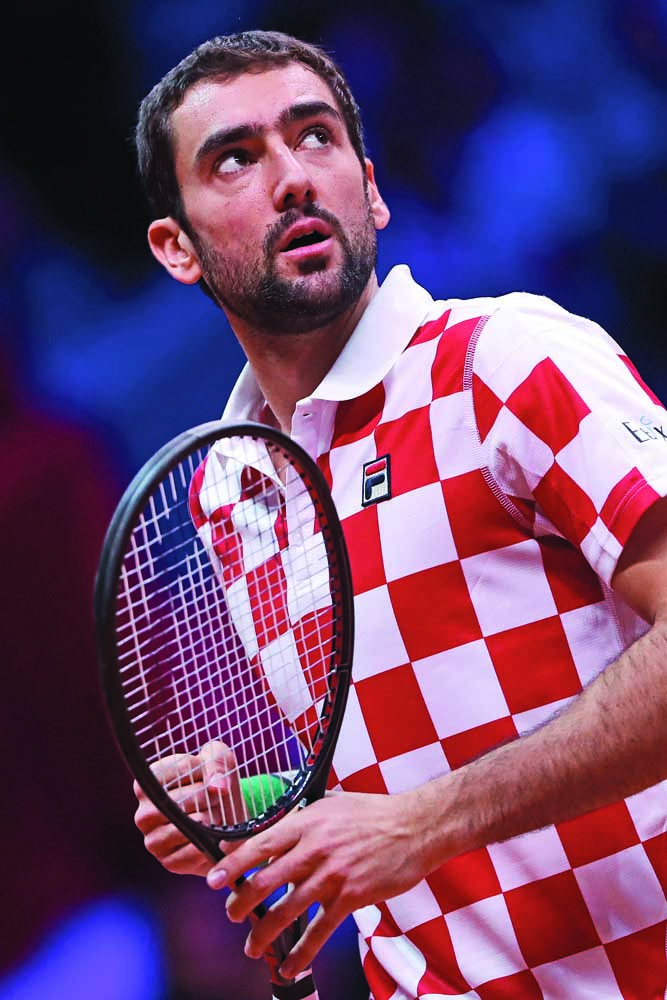Davis Cup braces for the end of an era
Published 12:00 am Monday, November 26, 2018

- Thibault Camus
Final or funeral? Opinions diverged as France and Croatia met this past week for the Davis Cup title in the northern French city Lille.
It marked the end of another too-lengthy tennis season but, more poignantly, it also marked the end of an era for the men’s team event that began in Boston in 1900.
Trending
That first final, played in trousers and whites at the original site of the Longwood Cricket Club, matched the United States against Britain over three days in a best-of-five-sets format. The Americans, whose team included the competition’s founder, Dwight Davis, swept the visitors, who had crossed the Atlantic by ship without their two best players: the Doherty brothers, Reginald and Laurie.
The Dohertys eventually were persuaded to make the same journey, winning the Cup for Britain at Longwood in 1903. But 115 years later, it is the flickering interest of tennis’ present-day superstars that has led to radical change.
If Roger Federer, Rafael Nadal and Novak Djokovic all had made Davis Cup a priority at the same time, they might have lifted the event into a new golden era, just as they have elevated their sport as a whole.
But it was not to be. Individual ambition, injuries and the demands of an overstuffed tennis calendar conspired against it. Federer and Nadal have played 38 times but never in Davis Cup competition. Djokovic has played Nadal and Federer only once each in the Cup, both matches coming before Djokovic entered his prime.
Beginning next year, the Davis Cup will abandon its traditional two-team final for an 18-team final phase in November in Madrid; in the new format, the stakes will be reduced from four singles matches to two, along with one doubles match, all contested in a best-of-three-sets format.
Critics have taken to calling it the Kosmos Cup or Piqué Cup: references to the investment group headed by Spanish soccer star Gerard Piqué that is largely bankrolling the revamped competition and intending to make a profit.
Trending
Officially, however, the competition will remain the Davis Cup, at least in the short term, with the champions still getting their mitts on one of the oldest and grandest trophies in global sports.
“I honestly don’t see it as the end of an era as much as I see it as the end of a chapter of a long book,” said David Haggerty, president of the International Tennis Federation, which controls the Cup.
Haggerty, an American and the primary architect of the Cup changes, most likely will find the public disagrees. The French captain, Yannick Noah, and his players were among the most vocal opponents of the new format, even though their federation voted in favor.
“The Davis Cup is dead, and part of the history of our sport is gone for a handful of dollars,” Nicolas Mahut, the French doubles stalwart, wrote on Twitter after the ITF surprisingly voted for the proposed changes in August.
But even if one embraces Haggerty’s metaphor, the concern has to be that the Davis Cup book could eventually go out of print. The men’s tour has pushed ahead with its decision to relaunch its own team event, the ATP Cup, in January 2020 in Australia with a 10-day format that is far too similar — with 24 teams and best-of-three-sets matches.
The prize money is set to be similar, too: $15 million for the ATP Cup and $18 million for the new Davis Cup. The big difference: The ATP players and their council fully back their new event, which, unlike the revised Davis Cup, will provide the extra incentive of ranking points.
The fact that both events are going to be staged less than two months apart is tennis at its most dysfunctional. Redesigning the Davis Cup and doing away with a home-and-away final phase and tradition make sense only if there is a guarantee that most of the best players are going to play. The ATP Cup makes such assurances impossible, even if ATP officials have repeatedly told me that their event was “never meant to replace or rival Davis Cup.”
But there has been some buyers’ remorse — or is it sellers’? — and there have been two recent rounds of meetings among the ATP, the ITF and representatives of the four Grand Slam tournaments.
Muddy waters? Absolutely. But what is clear is that Davis Cup as generations have long known it will soon be gone: three days of best-of-five-sets tennis with the spotlight on two nations and a large unabashedly home crowd. It has been quite a tale: full of plot twists, upsets and indelible characters like Bill Tilden, Ken Rosewall, John McEnroe and Noah to name just a few.
That might be worth definitively turning the page for if you know your odds of getting something more lucrative — and, most important, more relevant — are good. But as tennis’ cups runneth over and into each other, that is hardly how the odds look at the moment.








